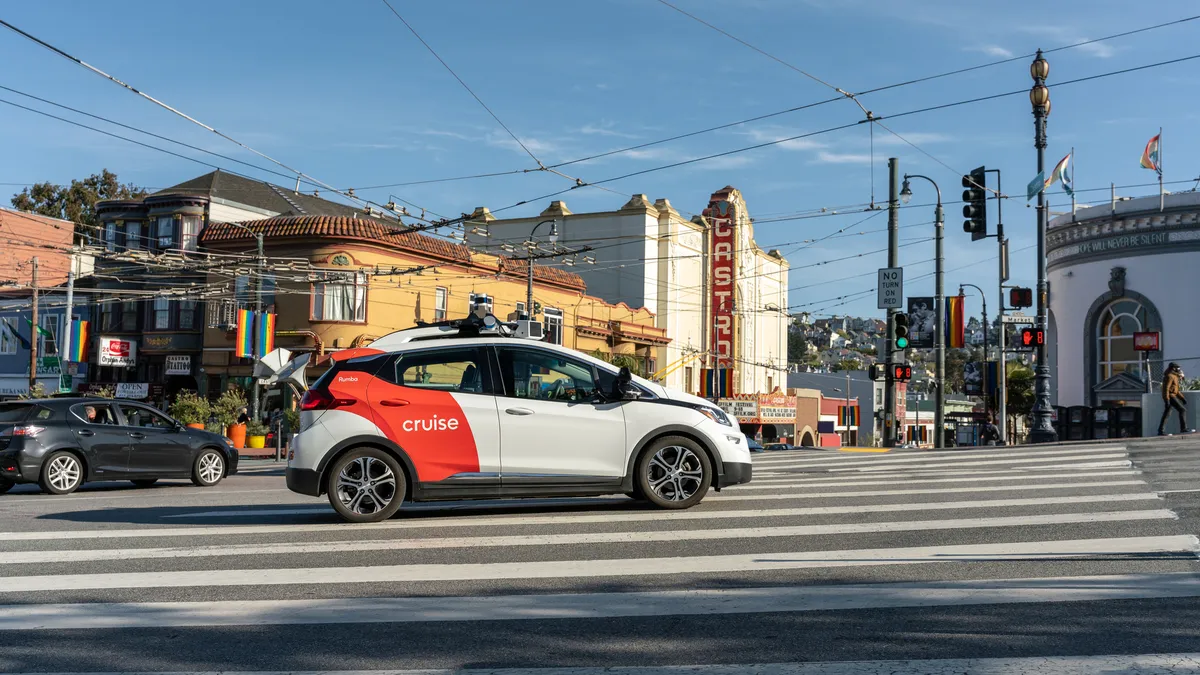Dive Brief:
- General Motors' Cruise robotaxi unit has dismissed nine executives amid an ongoing safety investigation after a company vehicle struck a pedestrian in San Francisco, Reuters reported Wednesday, citing an internal memo.
- Among the executives dismissed are Chief Operating Officer Gil West, Chief Legal and Policy Officer Jeff Bleich and senior vice president of government affairs David Estrada, Cruise confirmed to Reuters.
- California regulators suspended permits for Cruise to deploy its autonomous ride-hailing vehicles on public roads in the state, leaving the company's future in doubt. Cruise has since voluntarily suspended all of its U.S. operations amid the ongoing safety probes.
Dive Insight:
The executive shakeup at Cruise follows the resignations of the company’s two co-founders last month, CEO Kyle Vogt and Daniel Kan. With the latest dismissals, Cruise has now lost 11 members of its executive team.
"Following an initial analysis of the October 2 incident and Cruise's response to it, nine individuals departed Cruise," according to the company memo viewed by Reuters.
"We are committed to full transparency and are focused on rebuilding trust and operating with the highest standards when it comes to safety, integrity, and accountability," the memo said. "As a result, we believe that new leadership is necessary to achieve these goals."
As of press time, representatives at Cruise and GM did not respond to a request for comment.
Cruise’s fleet of Chevy Bolt EV robotaxis has been grounded since October over safety concerns after one of its ride-hailing vehicles struck a pedestrian in downtown San Francisco on Oct. 2, causing serious injuries. The incident resulted in multiple investigations surrounding the safety of Cruise’s self-driving vehicles, including from the National Highway Traffic Safety Administration.
GM invested roughly $1 billion in Cruise 2016 when it was still a relatively unknown startup working on autonomous driving technology. In March 2022, GM acquired SoftBank’s $2.1 billion stake in Cruise, which it sees as a future revenue generator.
GM CEO Mary Barra told investors that Cruise could generate $50 billion in revenue by 2030, but the unit lost more than $700 million in the third quarter of this year.
GM’s massive investments in Cruise were aimed, in part, to advance its own work on self-driving technology. But with the dismissal of key executives and its permits currently revoked by California regulators, the automaker’s future path forward for Cruise, which is based in San Francisco, remains unclear.












